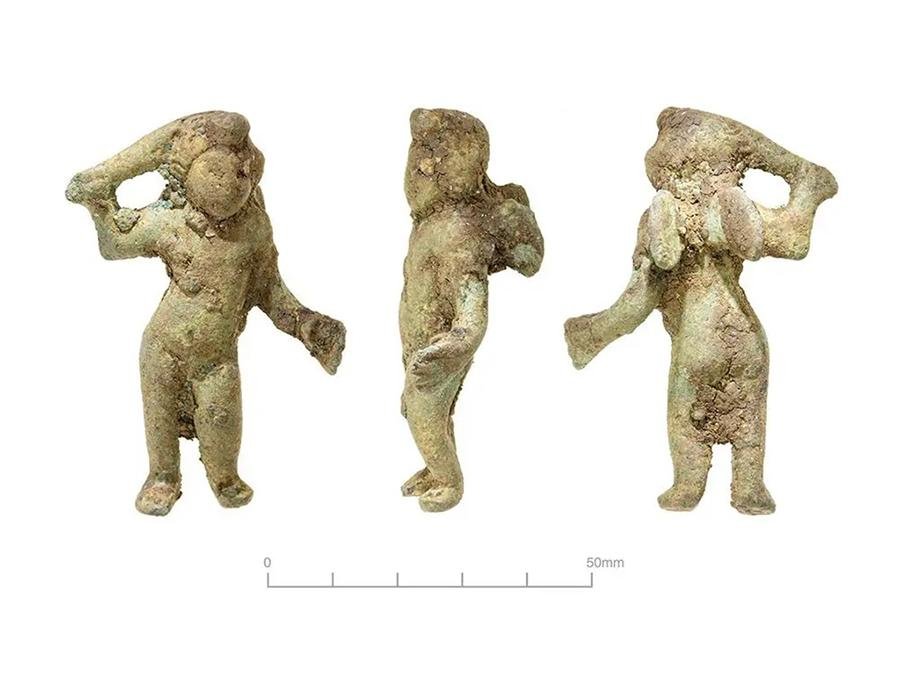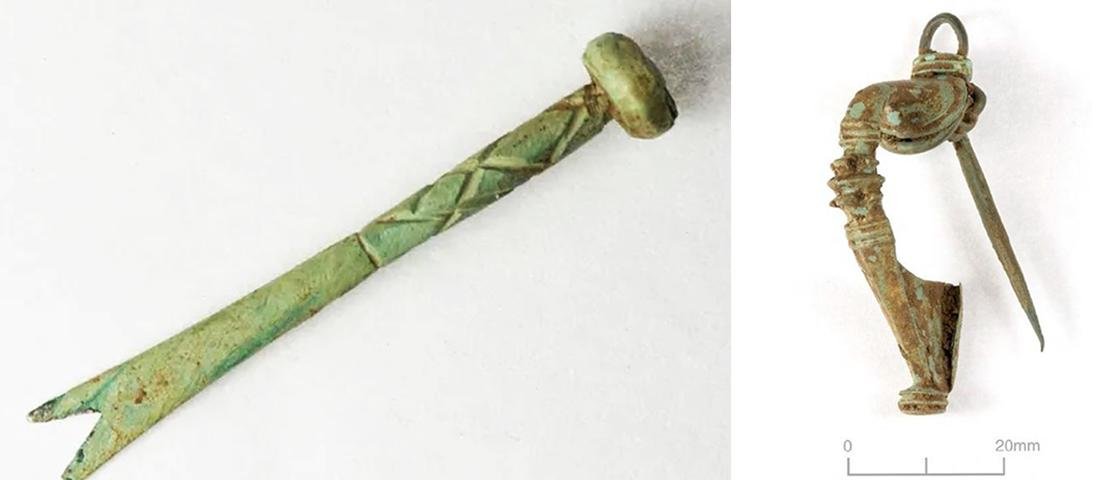Archaeologists working on the A417 Missing Link project in the Cotswolds have unearthed a treasure trove of artifacts dating back 12,000 years. The project, aimed at upgrading a three-mile stretch of the A417 highway, has revealed significant finds dating from the Mesolithic to the Second World War era.
 The Roman Cupid figurine found in the Cotswolds. Credit: National Highways/Oxford Cotswold Archaeology
The Roman Cupid figurine found in the Cotswolds. Credit: National Highways/Oxford Cotswold Archaeology
Among the discoveries are over 10,000 artifacts, including pottery, coins, jewelry, and a Roman Cupid figurine, showcasing the region’s rich cultural heritage. These findings will be showcased at Gloucester Guildhall on May 11th.
Excavations spanning 355,000 square meters involved a team of more than 60 archaeologists and 50 specialists, who meticulously curated over 10,600 artifacts weighing approximately 100 kilograms.
Steve Foxley, Project Director for the A417 scheme, said, “These discoveries will contribute significantly to our understanding of how people in the past adapted to changing environmental conditions.”
 Among the discoveries are over 10,000 artifacts. Credit: National Highways/Oxford Cotswold Archaeology
Among the discoveries are over 10,000 artifacts. Credit: National Highways/Oxford Cotswold Archaeology
Jim Keyte, National Highways’ Archaeology Project Manager for the A417, emphasized the importance of the project’s archaeological works in shedding light on ancestral lifestyles without causing delays to construction. “Our detailed archaeological excavations have revealed substantial new knowledge about how our ancestors lived and used this landscape,” Keyte noted.
The excavation was undertaken in collaboration with Oxford Cotswold Archaeology (OCA), Historic England, Gloucestershire County Council archaeologists, and contractors Kier. Alex Thomson, project manager at Oxford Cotswold Archaeology said, “We have been treated to some excellent archaeology that tells a fascinating story about this corner of the Cotswolds across thousands of years.”
This remarkable archaeological project is part of a new BBC Two series “Digging for Britain. Jim Keyte said his team is “now beginning the detailed analysis and interpretation of the finds”.





